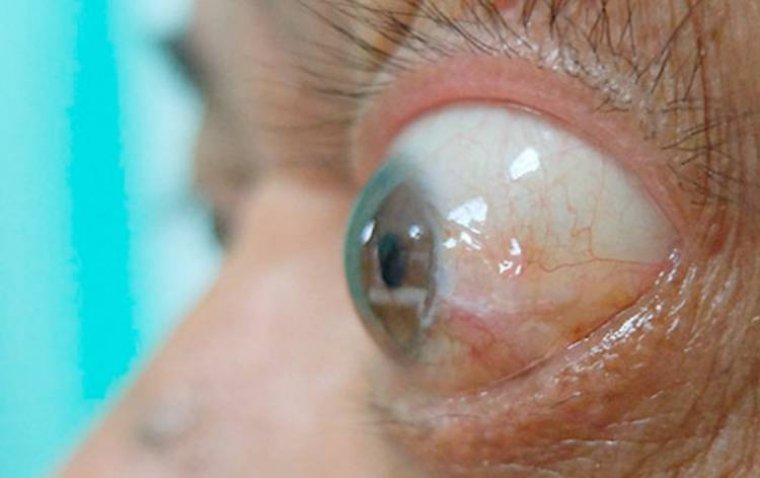
Periorbital Cellulitis: The Role of Antibiotics in Treatment
Periorbital cellulitis is an infection that occurs around the eye, typically affecting the tissues surrounding the eye, such as the eyelids and the area around the eye. It is a serious infection that requires prompt medical attention.
The most common cause of periorbital cellulitis is a bacterial infection, usually caused by Streptococcus pneumoniae or Haemophilus influenzae type B. These bacteria can enter the body through a break in the skin or a sinus infection and spread to the tissues surrounding the eye.
The Link Between Sinus Infections and Periorbital Cellulitis
Sinus infections, also known as sinusitis, are a common cause of periorbital cellulitis. Sinusitis is an inflammation of the sinuses, which are the air-filled spaces in the bones of the face that are lined with mucous membranes. When the sinuses become infected, the infection can spread to the surrounding tissues, including the eyelids and the area around the eye.
The infection can spread to the surrounding area through the small channels that connect the sinuses to the nose, which are called ostia. When the ostia become blocked, bacteria can build up and infect the sinuses. The infection then spreads to the surrounding tissues, causing periorbital cellulitis.
The link between sinus infections and periorbital cellulitis can be explained by the close proximity of the sinuses to the eyes. The sinuses are located in the bones around the eyes, and the infection can easily spread to the surrounding tissues, including the eyelids and the area around the eye.
Symptoms of Periorbital Cellulitis
It is important to be aware of the symptoms of periorbital cellulitis, as early diagnosis and treatment can prevent severe complications such as vision loss.
The most common symptoms of periorbital cellulitis are as follows:
● Redness and swelling of the eyelids and surrounding tissues: The affected eye may appear swollen and red, with the eyelids appearing puffy and swollen. The affected area may also be warm to the touch.
● Pain and tenderness in the affected area: The patient may experience pain and tenderness in the affected area, which may be exacerbated by movement of the eye.
● Fever: A fever may be present, indicating that the body is fighting an infection.
● The affected eye may appear droopy: This is a condition called ptosis, which is caused by inflammation of the muscles that lift the upper eyelid.
● Difficulty moving the eye: The patient may experience difficulty moving the eye due to pain and inflammation.
It is important to note that these symptoms may also be present in other conditions, such as conjunctivitis. However, if a patient presents with these symptoms and has a history of a sinus infection or recent trauma to the eye, periorbital cellulitis should be considered as a possible diagnosis.

Above image shows the symptoms of periorbital cellulitis Credit: Cleveland Clinic
What Is The Difference Between Periorbital Cellulitis and Orbital Cellulitis?
Periorbital cellulitis and orbital cellulitis are both infections that affect the tissues surrounding the eye, but they are different conditions with different causes and symptoms.
Periorbital cellulitis is an infection of the tissues surrounding the eye, including the eyelids and the area around the eye. Orbital cellulitis, on the other hand, is an infection of the orbital cavity, which is the space behind the eye that contains the muscles and fat that control eye movement. It is typically caused by a bacterial infection that spreads from the sinuses or the eye itself.
The Role of Antibiotics in Periorbital Cellulitis Treatment
The primary treatment for periorbital cellulitis is antibiotics. The type of antibiotic used will depend on the specific bacteria causing the infection. Commonly used antibiotics include:
Penicillin: This is the first-line treatment for periorbital cellulitis caused by Streptococcus pneumoniae, a common cause of the infection. Penicillin can be administered orally or intravenously, depending on the severity of the infection.
Amoxicillin-clavulanate: This is another option for treating periorbital cellulitis caused by Streptococcus pneumoniae. It is particularly effective in cases where the bacteria are resistant to penicillin.
Third-generation cephalosporins: These antibiotics are effective against a wide range of bacteria and are often used in cases where the specific cause of the infection is unknown.
Macrolides: These antibiotics are effective against Haemophilus influenzae type B, another common cause of periorbital cellulitis.
The duration of antibiotic treatment will depend on the severity of the infection and response to treatment. It is important to continue taking antibiotics as prescribed, even if symptoms improve, to ensure that the infection is fully treated.
In addition to antibiotics, treatment options may also include:
Pain relief medication: Over-the-counter pain relievers such as ibuprofen or acetaminophen can be used to alleviate pain and discomfort associated with periorbital cellulitis.
Applying warm compresses: Applying warm compresses to the affected area can help reduce swelling and improve circulation.
Is There Any Way to Prevent Periorbital Cellulitis?
Maintaining good hygiene: Washing the face and hands regularly, especially after blowing the nose or being around people with colds or other infections can help prevent the spread of bacteria.
Treating sinus infections promptly: Sinus infections can lead to periorbital cellulitis, so it is important to seek medical attention if you suspect you have a sinus infection.Avoiding contact with people who have contagious infections: Avoiding close contact with people who have contagious infections such as colds, flu, and strep throat can help prevent the spread of bacteria that can lead to periorbital cellulitis.
Keeping the environment clean: Regular cleaning of the environment and living area, especially in crowded places such as daycare centers and schools, can help prevent the spread of bacteria.
(1).jpg)










